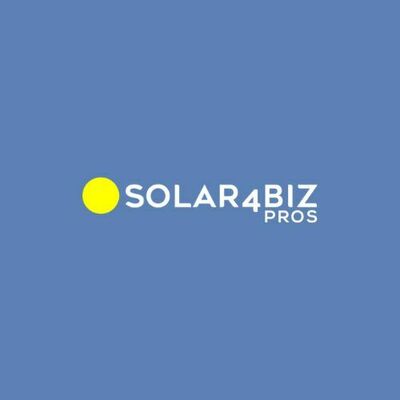Notifications
ALL BUSINESS
COMIDA
DIRECTORIES
ENTERTAINMENT
FINER THINGS
HEALTH
MARKETPLACE
MEMBER's ONLY
MONEY MATTER$
MOTIVATIONAL
NEWS & WEATHER
TECHNOLOGIA
TV NETWORKS
VIDEOS
VOTE USA 2026/2028
INVESTOR RELATIONS
COMING 2026 / 2027
ALL BUSINESS
COMIDA
DIRECTORIES
ENTERTAINMENT
FINER THINGS
HEALTH
MARKETPLACE
MEMBER's ONLY
MONEY MATTER$
MOTIVATIONAL
NEWS & WEATHER
TECHNOLOGIA
TV NETWORKS
VIDEOS
VOTE USA 2026/2028
INVESTOR RELATIONS
COMING 2026 / 2027
About Me
 Solar4Biz Pros
Solar4Biz Pros Solar4Biz Pros is your trusted partner in solar equipment distribution, providing high-quality solar panels, inverters, batteries, and racking systems at wholesale prices. Designed specifically for contractors, installers, and solar professionals, our platform offers fast shipping, expert support, and access to top-tier brands you can rely on. Whether you're working on a residential or commercial project, we supply the solar solutions you need—quickly and affordably.
Posted by - Solar4Biz Pros -
on - May 29 -
Filed in - Business -
cost of commercial solar panel installation federal solar tax incentives -
127 Views - 0 Comments - 0 Likes - 0 Reviews

Installing solar panels on a commercial building can feel like a financial stretch. Business owners often ask: “How much does it cost to install solar panels on a commercial building?” The short answer? It’s not cheap. The cost of commercial solar panel installation typically ranges from $100,000 to $1 million or more, depending on the size and complexity of the system.
That number alone causes anxiety for most decision-makers. And it’s exactly why federal solar tax incentives are so important—they shrink the upfront investment and drastically improve the return on investment (ROI).
Let’s break down how these incentives work, what they include, and how much they can actually save you.
1. Investment Tax Credit (ITC)
The federal solar tax incentives start with the Investment Tax Credit (ITC)—and it’s a game changer. The ITC offers a 30% tax credit for eligible commercial solar projects. That means if your system costs $500,000, you can take $150,000 directly off your federal tax bill.
2. Bonus and Accelerated Depreciation
Through accelerated depreciation, businesses can deduct a significant portion of their solar investment over five years. In 2025, you can also apply bonus depreciation—a huge upfront deduction.
Here’s what it can look like:
3. Transfer of Credit (Sell Your Credit for Cash)
If you can’t use the credit, you can sell it. That’s right—transferability means eligible businesses can sell their unused tax credits to a third party for cash. This increases liquidity and improves ROI.
4. Direct Pay Option (For Nonprofits and Public Entities)
If you're a nonprofit, municipality, or tribal entity, you may not owe taxes. That's where Direct Pay comes in. It allows you to receive a refund from the IRS—just like cash—equal to your tax credit value.
Let’s keep it simple. Federal incentives do three things:
Practical Example – $1M Commercial Solar Project:
That’s nearly 40% of the system cost covered before you generate a single kilowatt-hour.
Without incentives, commercial solar ROI can take 7–10 years. But with federal support, most businesses break even in 3 to 5 years—sometimes less if paired with local incentives or rebates.
After that, it’s pure savings. Businesses often see:
You start with a system that might cost $500,000 to $1 million. But after applying:
Your true net cost could drop by 35–50%. That means your initial fear around the cost of commercial solar panel installation turns into confidence about long-term savings and reduced operating costs.
Let’s recap the results business owners can expect when leveraging these federal programs:
✅ Slash upfront solar costs by 30–50%
✅ Recoup investment in 3–5 years
✅ Save $20,000+ annually on power
✅ Sell unused credits for real cash
✅ Reduce your tax liability by six figures
These federal solar tax incentives won’t last forever. Bonus depreciation is phasing down. Rules around domestic content are tightening. But right now, the window is wide open.
If you’re serious about reducing energy costs, boosting sustainability, and turning sunlight into long-term business savings—now is the time.
Get a tailored quote, evaluate your tax position, and start slashing that cost of commercial solar panel installation before incentives change.
